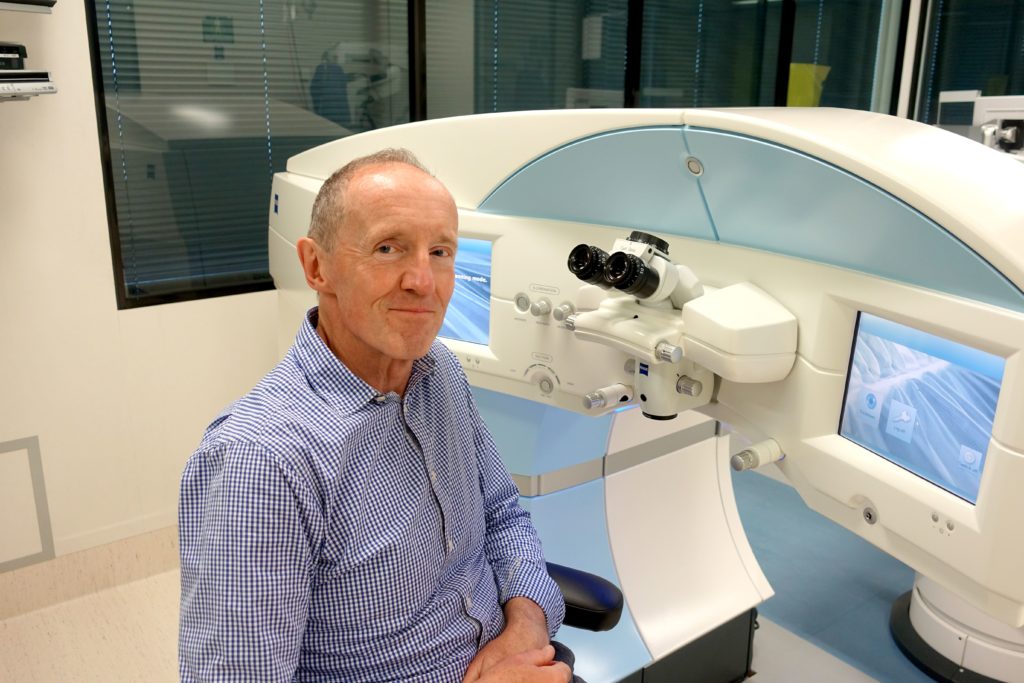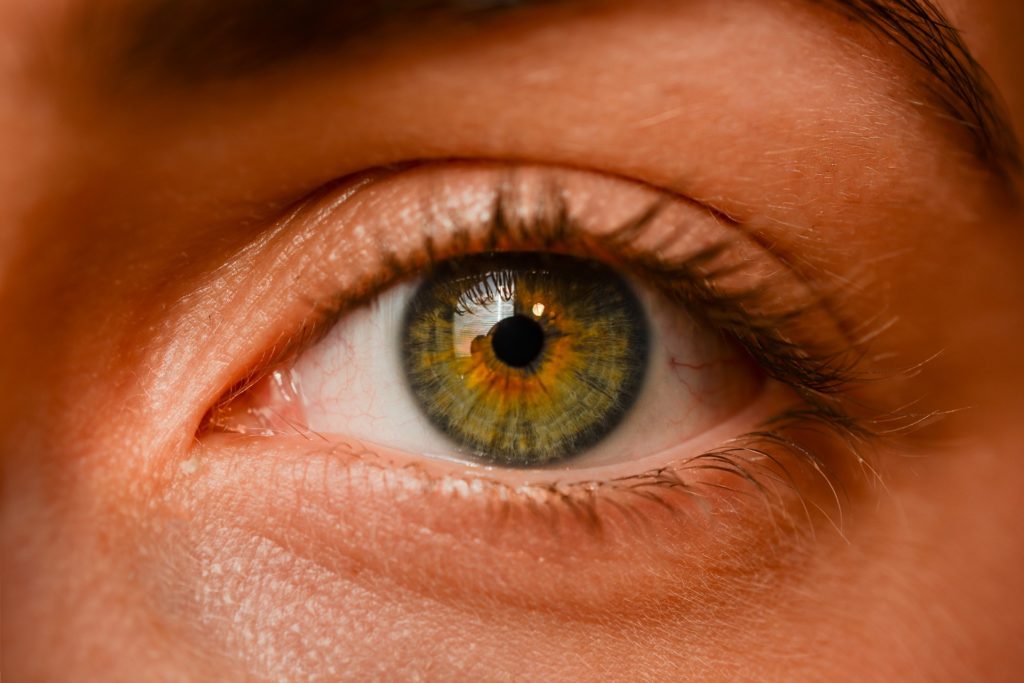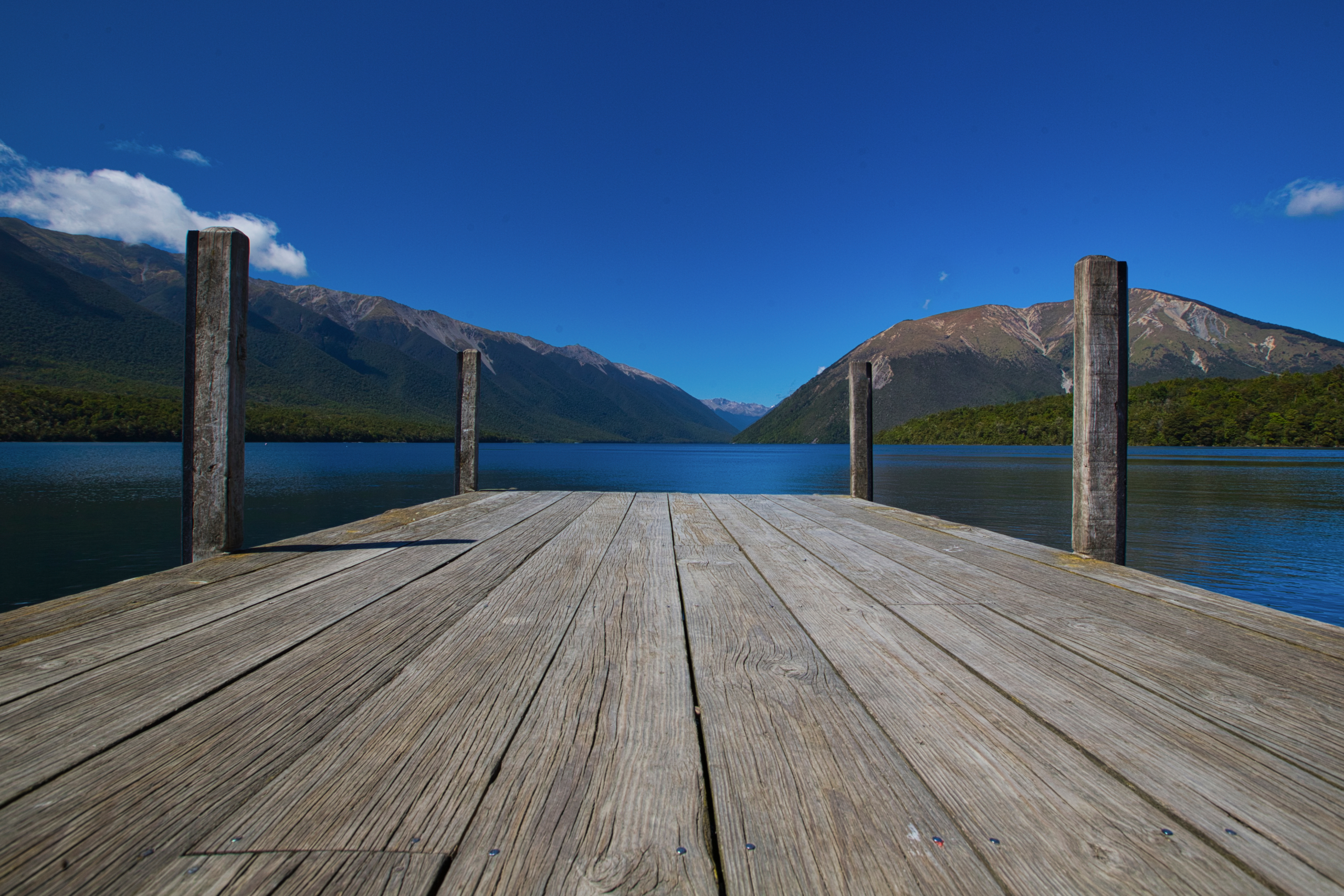
Wellington Eye Centre Ophthalmologist
These days, there are two types of laser clinics – ones that do SMILE® surgery and ones that do not. In New Zealand, Australia, and the rest of the world, most laser eye surgery clinics offer SMILE as well as LASIK and PRK. The choice of which procedure to have done depends on several factors including: type of focusing error you have, your age, lifestyle, and personal preferences.
If you have been researching different laser clinics prior to deciding about having laser eye surgery, you will undoubtedly have come across clinics that do not offer SMILE surgery. These clinics will usually tell you why they do not offer SMILE surgery, and why they do not think it is an appropriate procedure for vision correction. This article will talk about some of the misinformation and outdated information you may find about SMILE surgery. Hopefully it will put your mind at rest about SMILE being safe and effective.
How long does laser eye surgery take?
You may have read it takes longer to do SMILE surgery than LASIK surgery. This can be a concern for those who want to get it over and done with as quickly as possible. A typical statement you may read is that treatment time for LASIK takes 26 seconds, while treatment time for SMILE surgery takes 120 seconds. This is quite misleading, as it is not including all steps of each procedure and LASIK has more steps involved compared to SMILE.
For a LASIK procedure, two different laser machines are used, which you are moved between. The second laser which does the refractive correction can take between 5-40 seconds, depending on your prescription. For SMILE surgery only one laser is used and the laser duration is between 20-30 seconds. It then takes 60-90 seconds to remove the lenticule. While both LASIK and SMILE are fast procedures, LASIK does take longer to carry out than SMILE surgery.
I measured the time it took me to perform LASIK and SMILE procedures. I timed from when I started to clean around the eyes with antiseptic until the end of the procedure when the patient was moved out from under the laser. All procedures were uneventful.
The times were as follows:
- LASIK both eyes: 24 minutes 35 seconds
- LASIK one eye: 15 minutes
- SMILE both eyes: 16 minutes 28 seconds
To sum up, having SMILE surgery on both eyes takes little more time than having LASIK on one eye.

How long does SMILE surgery take to heal?
Some sites say that it takes longer for the eye to heal after SMILE surgery. This is quite incomprehensible if you look at the facts. LASIK surgery involves making a corneal flap, under which the visual correction is carried out. This flap heals quite slowly because the cornea has no blood supply to speed up healing of the corneal tissue. It is important to avoid rubbing the eye for the first few months after LASIK surgery as the flap can be displaced because of the slow healing.
With SMILE the only disruption on the front of the eye is a small 2.4 mm incision on the upper part of the cornea. This incision heals over within three days, after this all normal activities can be resumed. Unlike with LASIK where we recommend three weeks down time.
We advise you against rubbing your eyes after any sort of laser eye surgery. But if you accidentally rubbed your eye a couple of days after SMILE surgery you really could not do yourself any harm. This is because there is no flap to get disturbed.
What is the visual recovery time?
You may read that visual recovery is slower after SMILE compared to LASIK. This is one of the few comments made comparing SMILE to LASIK that may be relatively true. My experience in the six and a half years that I have been doing SMILE surgery is that on average, at day one after the procedure, vision following LASIK is a bit crisper and sharper than after SMILE. However, this difference has normally disappeared after a few days. This is also the experience of most other SMILE surgeons.
Longer term, there is no difference in visual outcomes between the two procedures. Following SMILE surgery and LASIK surgery, most people see well enough to drive and get back to normal activities within 24 to 36 hours.
A large study comparing SMILE with LASIK was carried out in Singapore a few years ago. In this study participants had LASIK on one eye and SMILE on the other. The study showed that the visual results for both procedures were identical.

Will I get dry eyes from LASIK or SMILE eye surgery?
One of the potential advantages of SMILE is the possibility of less dry eye symptoms after the procedure. Dry eyes after laser eye surgery occur because of damage to corneal nerves caused by the procedure. This results in reduced sensation or numbing of the cornea, and this in turn results in reduced tear production and possible dry eye symptoms. As LASIK surgery involves making an almost 360-degree corneal flap more of the corneal nerves are then cut. The incision with SMILE surgery is only 2.4mm long and results in much less loss of corneal sensation. Corneal nerves take up to a year to heal and recover after laser eye surgery. Dry eye symptoms tend to be most noticeable during this period.
It would be expected that SMILE surgery would cause less dry eye symptoms because of less nerve damage, and this has been confirmed by many studies. Some studies have shown no difference between the two procedures, but no studies have shown that dry eyes are worse after SMILE than after LASIK.
What are the long term outcomes from laser eye surgery?
LASIK has been carried out for over 30 years, there have been many millions of LASIK procedures carried out worldwide over that time. While SMILE surgery has only been around for 10 years, there have already been over 3 million surgeries performed worldwide. The number of SMILE surgeries being performed is increasing very rapidly, while LASIK surgery numbers are not increasing as rapidly.
The 10-year outcomes, for people who had SMILE surgery carried out when it was first introduced, have recently been published in the medical literature. The results show that SMILE is a safe and effective procedure, and long-term results are excellent and not inferior to LASIK. 10 years is more than enough time to establish the safety and effectiveness of a surgical procedure.
Can I have a re-treatment after SMILE surgery?
A low percentage of treatments require a second treatment (or enhancement) to get the best visual outcome. The comment is often made that SMILE surgery cannot be performed a second time if a re-treatment is required. This is correct but is hardly a criticism of SMILE. Re-treatment after SMILE involves either PRK or LASIK surgery. SMILE surgery is usually not possible for a re-treatment because the piece of tissue that must be removed to correct vision is too thin to be safely removed.
Enhancement surgery after LASIK may also require a different procedure to be performed. If it is more than a year after the first procedure, it may not be possible to lift the existing corneal flap and a PRK procedure may be required.
One thing to remember is that the re-treatment rate after SMILE surgery is less than after LASIK surgery. My SMILE re-treatment rate is one percent or less but is 3 to 5 times higher after LASIK surgery. Therefore the whole issue of enhancement surgery is less important after SMILE surgery.

Am I suitable for SMILE surgery?
You may read that SMILE is limited to a small number of patients. Supposedly because it can only treat moderate short sight and not astigmatism or extreme short sight. This is completely untrue. Actually SMILE surgery can treat pretty much the same range as with LASIK.
In New Zealand, Australia, and most other places, SMILE is approved to treat up to 10 dioptres of short sight and 5 dioptres of astigmatism. In fact, in many cases high amounts of short sight can be treated safer with SMILE over LASIK. Because SMILE does not involve making a corneal flap, the procedure has less effect on the strength of the cornea than does LASIK. This means that a large correction may be possible with SMILE but not with LASIK. At the Wellington Eye Centre, over 50 percent of our patients have SMILE surgery performed.
However SMILE cannot currently be used to correct long sight, whereas LASIK can. Again, this is a silly criticism. If you are longsighted, have LASIK. No one criticises aeroplanes because they cannot travel underwater. If you want to do that then go by submarine. However, clinical trials are currently underway for SMILE to treat long sight. Results published so far are very good, and it is likely that SMILE for long sight will be available in clinics like the Wellington Eye Centre within 1 to 2 years.
Is SMILE surgery better than LASIK surgery?
I was the first laser surgeon in New Zealand to carry out LASIK, I was the first eye surgeon in New Zealand to have LASIK, and I was the first New Zealand eye surgeon to perform SMILE surgery. I believe that SMILE and LASIK are both great procedures for vision correction and they both have their place. On average, one is not better than the other, but they each have advantages in different situations.
I had LASIK done at the age of 44, at which time SMILE was not available. If I was the same age today I would still choose LASIK. This is because I could have Presbyopia Blended Vision surgery to give me better near as well as distance vision. But if I was younger I would definitely have SMILE surgery because of the faster return to normal activities, increased predictability and reduced chance of having dry eyes. Since I have been doing SMILE surgery I have noticed that young short sighted people who are planning to have laser eye surgery have almost always already decided that they want SMILE surgery. Even before they come to see me! They just get it.
SMILE surgery has been a real game changer for laser eye surgery. Currently SMILE can only be performed using the VisuMax® femtosecond laser which is made by Carl Zeiss Meditec. Developing SMILE surgery was a huge and expensive undertaking for Zeiss. Other laser manufacturers have recognised the advantages and potential of SMILE and are undertaking their own research and development. These companies would not be expending significant time and resources if they did not recognise that SMILE will be around for a long time.

Like the sound of SMILE?
Feel free to get in touch with the team at Wellington Eye Centre if you have any other questions. You can book in for a free laser suitability assessment, where our technician can answer any questions you may have. Or you can call us on 0800 733 327 or complete the contact form below.
SMILE® and VisuMax® are registered trademarks of Carl Zeiss Meditec.

What to expect during your Laser Suitability Medical Assessment at Wellington Eye Centre

Common Medications Used in Laser Eye Surgery

Amblyopia and Laser Eye Surgery

How Much Does Laser Eye Surgery Cost in 2025?

SMILE into Summer

What to expect during your Laser Suitability Medical Assessment at Wellington Eye Centre

Low-Level Light Therapy for Dry Eyes

Common Medications Used in Laser Eye Surgery

Amblyopia and Laser Eye Surgery

